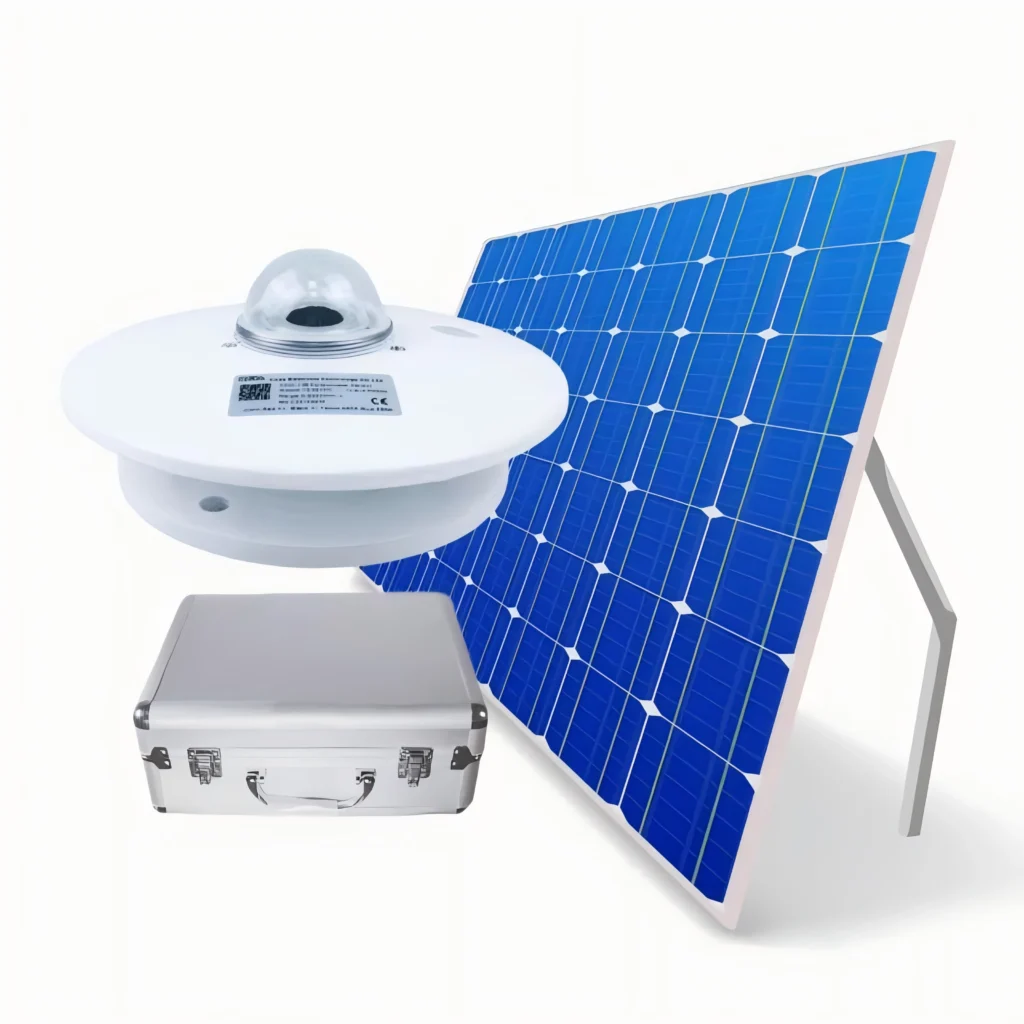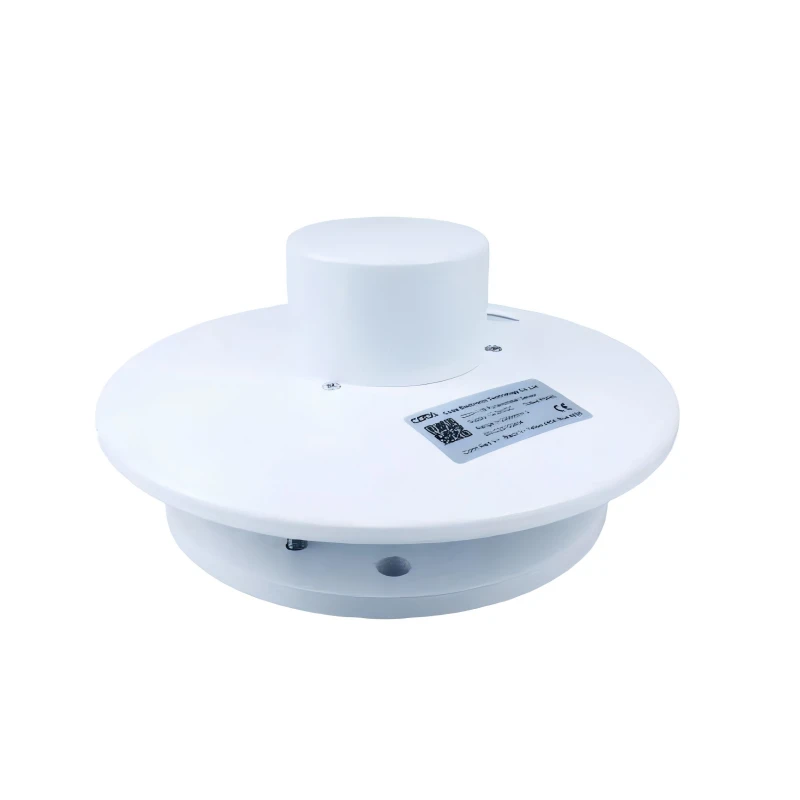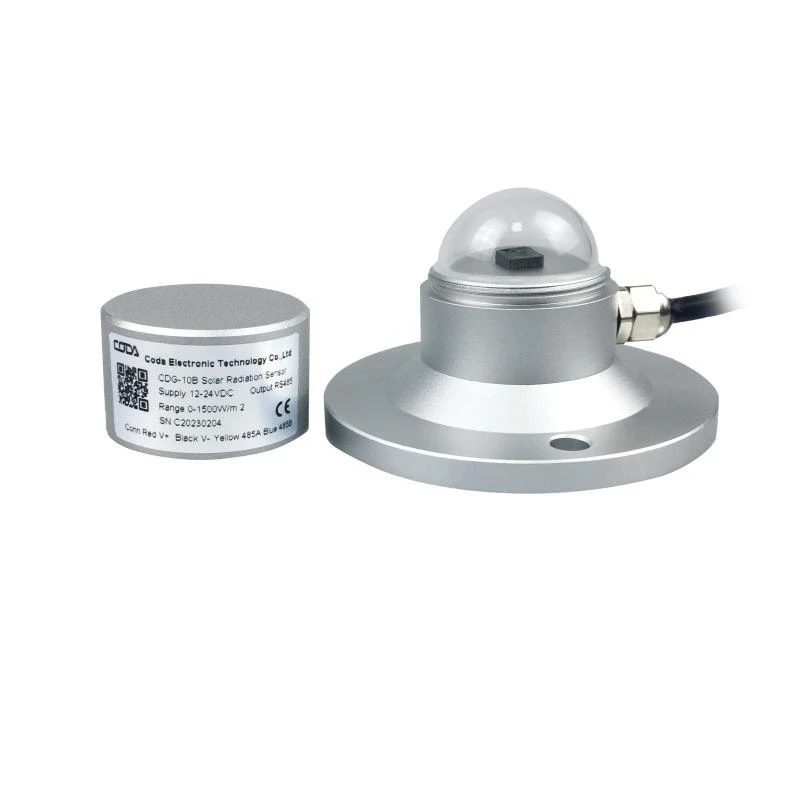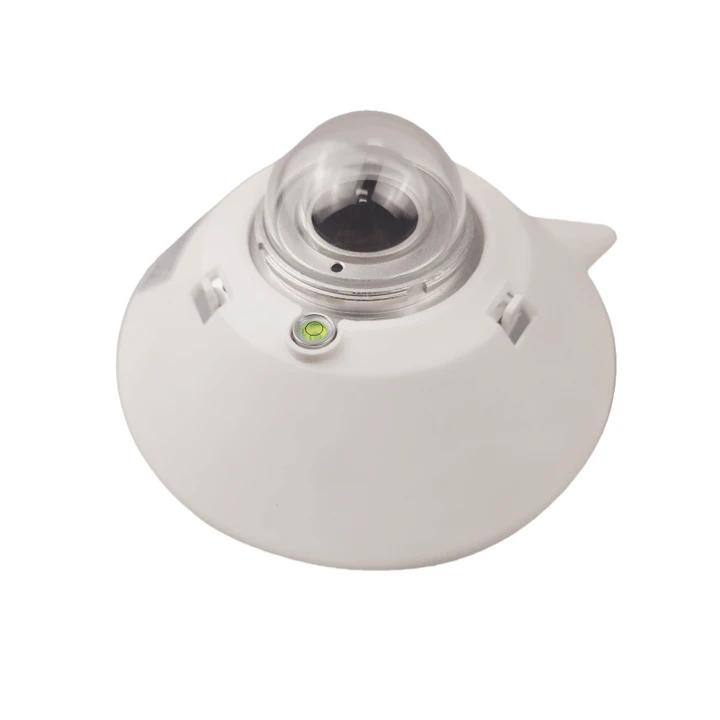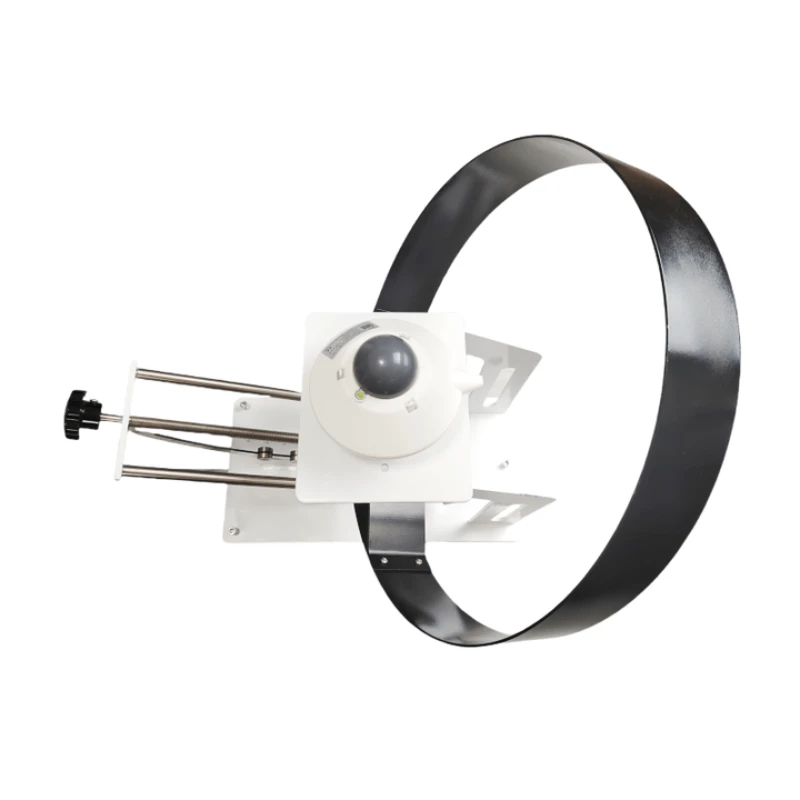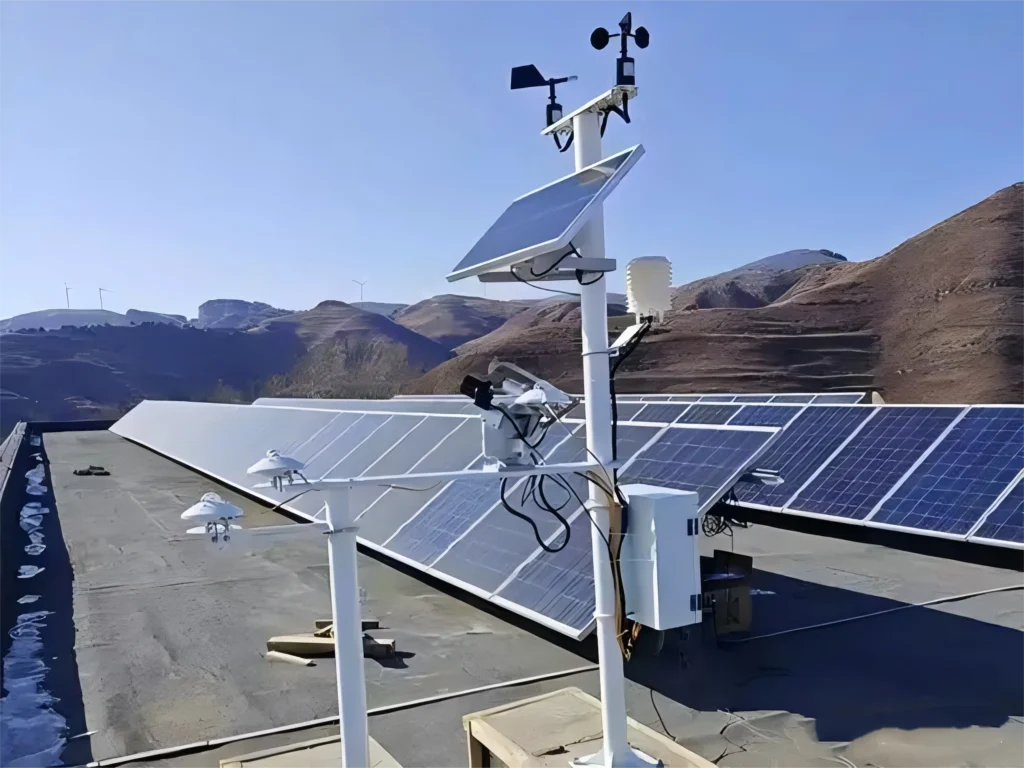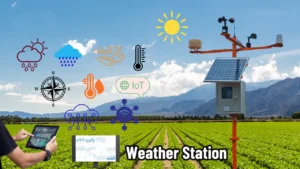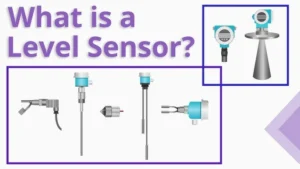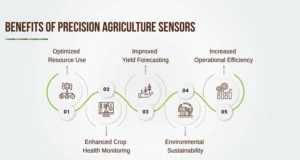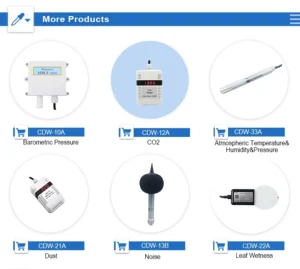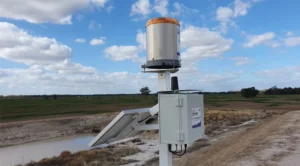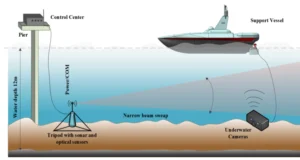what is solar radiation?
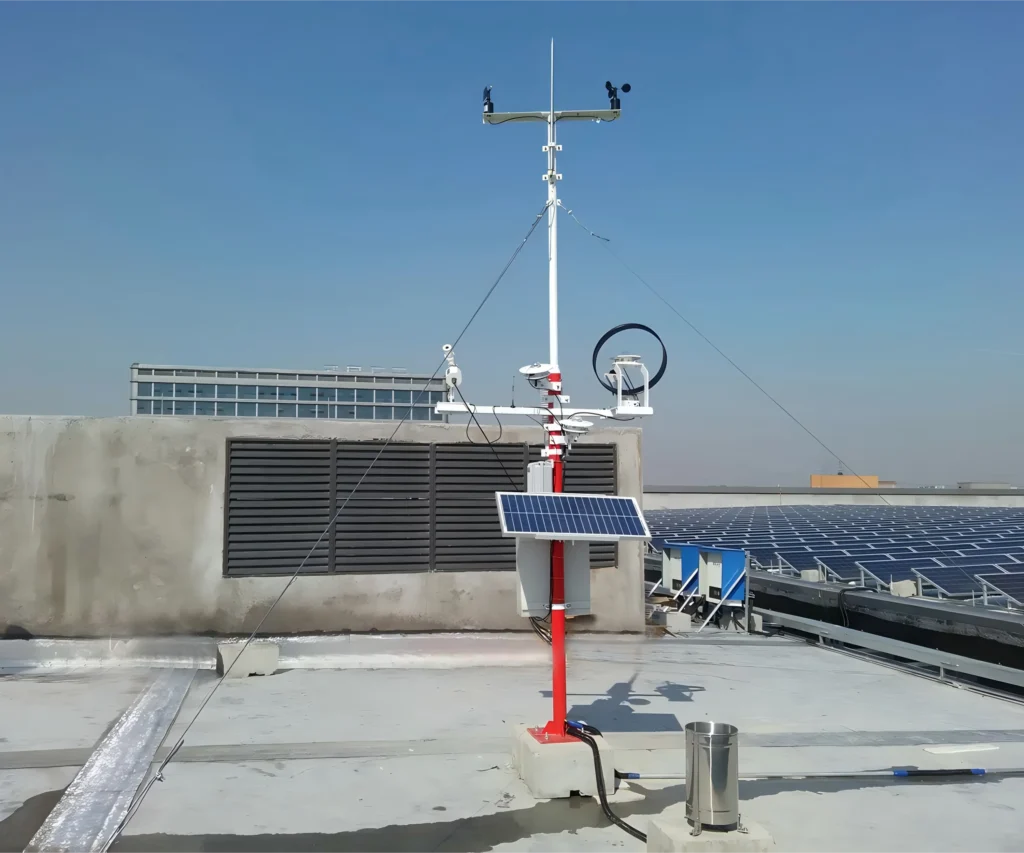
Working of solar radiation sensors:
Principle of thermoelectric:
CDG-11B Pyranometer typically use blackened thermopiles to absorb solar radiation. A thermopile consists of a series of multiple thermocouples. When solar radiation hits, the sensor’s induction element (like a thermopile or photocell) receives only skyward scattered radiation under the shadow ring and produces an electrical signal related to its intensity.
According to the Seebeck effect, a thermocouple generates a thermoelectromotive force at both ends. The stronger the solar radiation intensity, the higher the temperature of the thermopile heating end, the greater the electromotive force generated. By measuring this electromotive force, the intensity of the sun’s total radiation can be calculated. The output signal is usually a millivolt voltage signal and has a linear relationship with the solar radiation intensity.
Principle of photoelectric:
Photoelectric CDG-10B total solar radiation sensors use photoelectric elements (such as silicon photocells) to detect solar radiation. A silicon photocell is a semiconductor device.
The short-circuit current of a photocell has a proportional correspondence with the intensity of solar radiation. In practical scenarios, the intensity of solar radiation can be evaluated by gauging either the short-circuit current of the photocell. Nevertheless, to attain precise measurement, it is obligatory to make amends for elements such as the temperature traits of the photocell. The photocell’s efficacy is sensitive to temperature. If not addressed, it can cause inaccuracies in solar radiation intensity determination.
What is the Scattering Radiometer?
Scattered radiation sensor is an instrument that specially measures the scattered radiation of the sun. During the process when solar radiation reaches the ground, particles such as gas molecules, dust and cloud droplets in the atmosphere scatter part of it, and this part is called scattered radiation.
Shadow ring method:
This is a common way to measure scattered radiation. Scattered radiation sensors usually include a total radiation meter with a shadow ring. The function of the shadow ring is to block direct solar radiation, allowing only scattered radiation to reach the sensor’s sensing surface.
Shadow ring design and installation need precise sun position change calculations for effective direct light blocking. When solar radiation arrives, the sensor’s induction element (e.g. thermopile or photocell) gets only sky-scattered radiation under the shadow ring and generates a related electrical signal.
Installation:
We usually install the solar radiation sensor in an open and unobstructed position. We need to keep its sensing surface level to ensure that it can accurately receive solar radiation from all directions of the sky. Generally, we use a special installation bracket. We usually determine the height of the bracket according to the actual situation to avoid the surrounding buildings, trees and other objects.
Keep away from large areas of reflective objects, such as large metal roofs, water, etc. These reflection sources may cause the sensor to receive additional reflected radiation, interfering with normal measurements of scattered radiation.
Solar radiation sensing surface of the sensor must be mounted horizontally. This is because the scattered radiation is from all directions of the sky, and only the induction plane is level to receive the scattered radiation in all directions evenly. Can use a level to assist the installation and ensure that the installation accuracy of the sensor is within the allowable error range. Usually, the horizontal error should not exceed ±0.5°. If the installation is not horizontal, it will cause the sensor to receive uneven scattered radiation in different directions and make the measurement data biased.
application:
solar energy industry
In the initial planning of large-scale solar PV plants, radiation sensors are crucial for solar resource evaluation. Long-term measurement of total solar radiation at candidate sites helps determine the area’s solar energy abundance.
In a completed PV power station, a radiation sensor is installed for real – time monitoring of solar radiation intensity. Subsequently, combining these data with the station’s power generation data allows for analysis of power generation efficiency and evaluation of PV module performance.
Meteorological Monitoring
Radiation sensor is one of the important equipments in the ground weather station. The measurement of total solar radiation, scattered radiation, direct radiation and other data can help meteorologists understand the distribution of solar radiation energy on the Earth’s surface.
In meteorological instruments on high-altitude weather balloons or aircraft, radiation sensors measure radiation at different altitudes, aiding the study of solar radiation’s transmission, absorption and scattering in the atmosphere.
agricultural
In the realm of greenhouse cultivation, we deploy radiation sensors to measure the solar radiation present within the greenhouse enclosure. We comprehend the magnitudes of both the total solar radiation and the scattered radiation intensity, and this empowers growers to regulate the opening and closing extents of facilities such as sunshade nets and insulation curtains.
For agricultural researchers, radiation sensors can help study the effects of solar radiation on crop growth and development. Different crops have different demands for solar radiation at different growth stages.
building trades
In the building design process, radiation sensors can be employed to gauge the solar radiation at the building site. Relying on these measurements and taking into account the local climate characteristics, architectural designers can plan the building’s orientation, determine the appropriate window sizes, and design shading devices.
